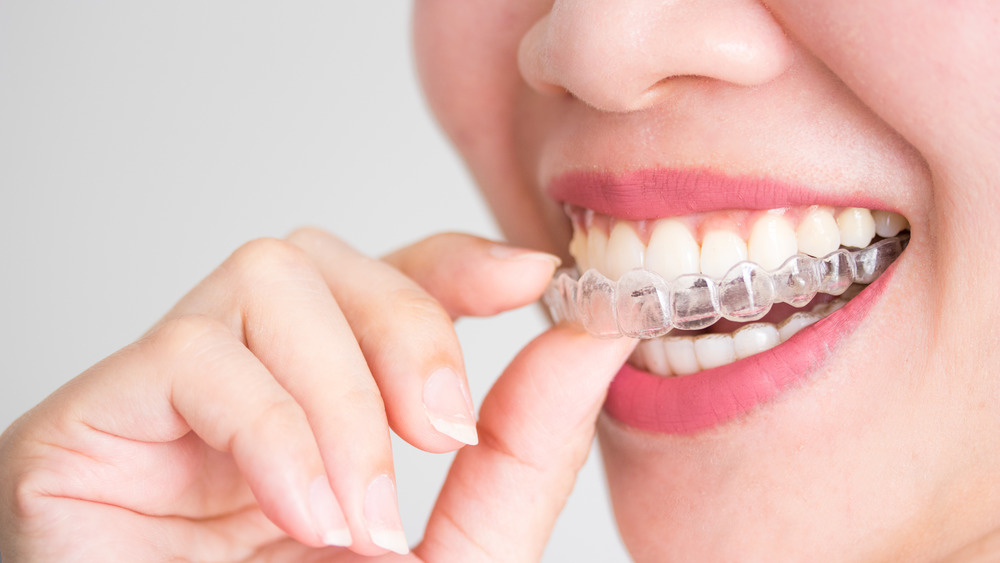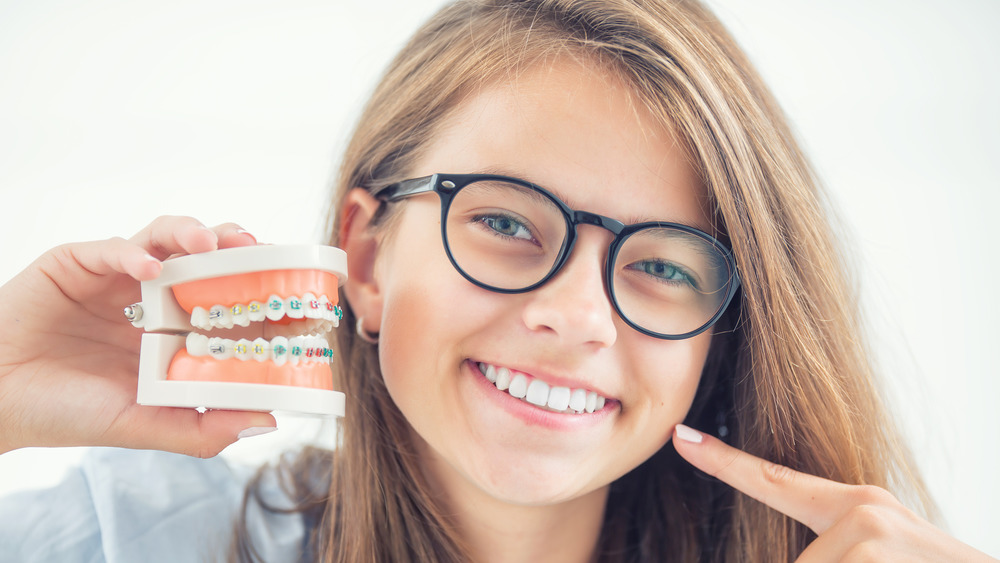Unless blessed with a genetically perfect bite, chances are you’ve needed braces at some point in your life. According to the American Dental Association, braces and orthodontic treatments all aim to improve a persons bite, aligning the upper and lower jaw. While most people will see these results as a string of straight teeth, to an orthodontist, the specialist responsible for diagnosing and treating misalignment of the teeth, the goal is to realign a persons teeth and jaw (via Healthline).
Traditionally, realignment was done through the placement of metal braces, but thanks to modern advancements in dentistry, more options are now available to patients. When you think of braces, you probably think of brackets on each tooth and a wire across the entire length of the jaw (via the American Association of Orthodontists (AAO). While stainless steel brackets are still used, there are now gold and tooth-colored ceramic brackets, too.
Tooth-colored ceramic brackets are more subtle and less noticeable, for those who don’t want to be seen wearing braces past adolescence. Another option are “lingual” braces, in which the brackets are actually affixed to the back of the teeth instead of the front. While this won’t be an effective treatment option for all orthodontic issues, you can discuss it with your provider.
If you are just completely opposed to brackets and wires, then clear aligners like Invisalign may be an option for you. Clear aligners are clear plastic-like materials, which simply go over the teeth. They need to be worn 22 hours a day for a few weeks, before moving on to the next aligner.
Traditional braces may require diet changes

So is there a difference between traditional braces and clear aligners? The simple answer is yes.
Traditional braces have been around longer so there is more evidence and research to support their use (via Diamond Braces). These braces can be used even in the most severe dental cases, which cannot be said for clear aligners. While clear aligners can fix a number of different dental issues, there are some that require the strength of metal or ceramic brackets and wiring.
Since traditional braces are secured directly to the teeth, there isn’t as much to keep track of, and therefore, tend to be more successful. With clear aligners, some people do not wear them for the recommended 22 hours a day and then are disappointed with the results. Additionally, while both options are expensive, your insurance is much more likely to cover traditional braces. Invisalign in particular can cost anywhere from $2,400 to $9,000, while traditional braces run about $1,700 to $6,000.
Another difference between the two is food restrictions. With traditional braces, it’s recommended that you avoid sticky and hard foods. Certain hard foods run the risk of popping brackets and causing wires to come undone — and can be painful and unpleasant. For those who simply do not want to modify their diet, Invisalign may be the way to go.
While there are many treatment options out there, it’s always best to speak with an orthodontist and come up with a reasonable treatment plan that best fits your needs and lifestyle. Before you know it, you’ll be on your way to a straighter, wider, and better aligned smile!




